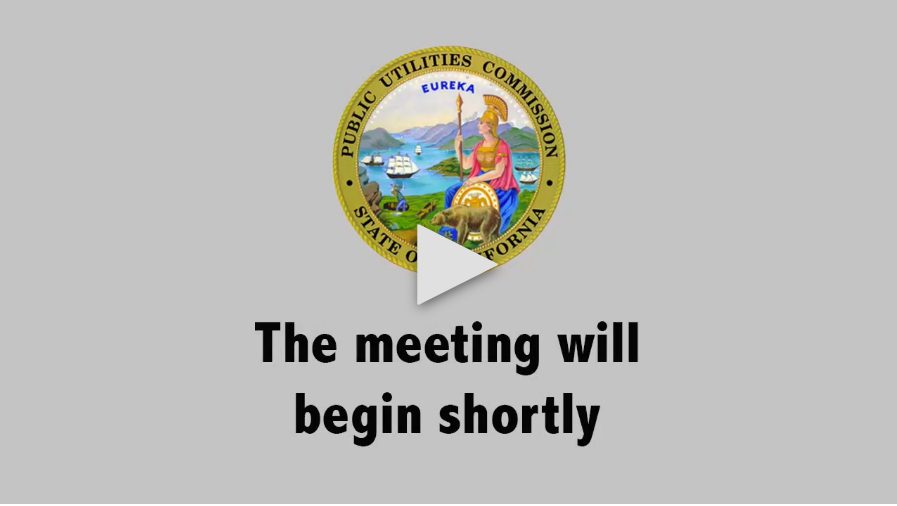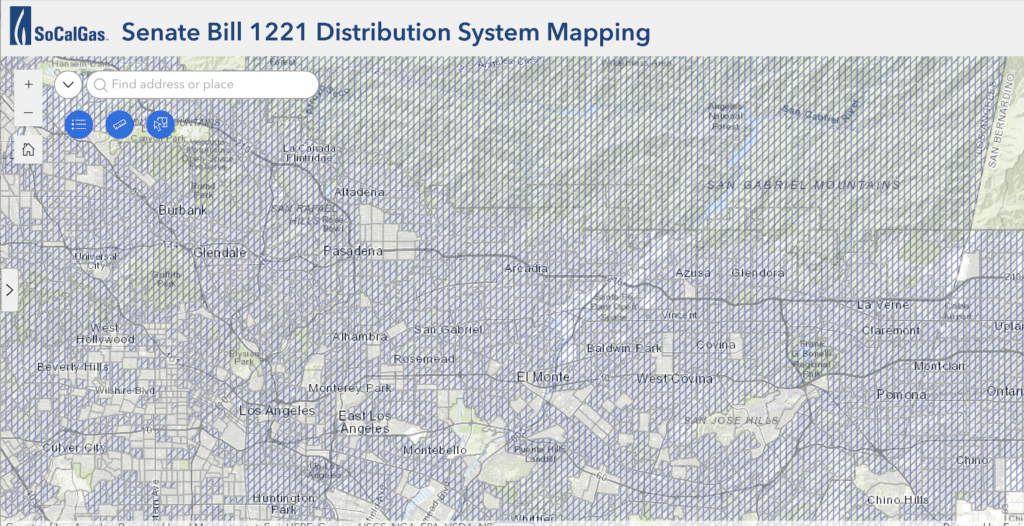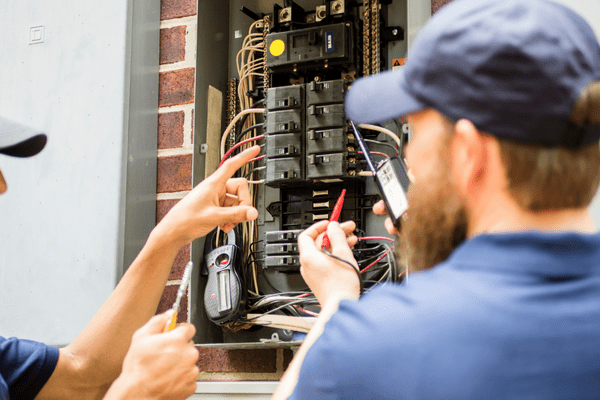“Hi, Can you Hear Me?” A CPUC Debrief
The California Public Utilities Commission heard an earful about neighborhood decarbonization. Here’s the input from Californians who support climate action.

More people who want climate action should attend public forums like the ones that the California Public Utilities Commission held last Thursday regarding the selection of neighborhood decarbonization projects. More of us should sit on these calls and sign up to speak. Even if we aren’t party to a specific proceeding or don’t feel expert enough. Or don’t want to dedicate one hour of our lives to hearing fellow callers struggle with the mute button and then waste time saying “Hi, can you hear me?”
No really, hear me out.
For one, we are being drowned out two to one in these official meetings by a maddening mix of climate deniers, industry interests, and understandably confused residents. Secondly, there’s some interesting work being done by public health coalitions and environmental organizers — more folks should hear their ideas. And these experiments in democracy only work when people give input.
As my UCLA colleague Denise Grab wrote about last week, California is on the path toward creating gas-free neighborhood zones — as many as 30 zones throughout the state — and the CPUC is the entity responsible for leading a thorough public comment process and coordinating the selection of priority zones with the gas utilities. This is thanks to SB 1221, a law passed last year that creates a pathway to pay for customers in some select communities to get new zero-emission alternatives to gas infrastructure. These communities get to vote on whether they want to participate, and 67% must vote yes. There’s a lot of good reasons (health, environmental, affordability) to experiment with the transition away from gas service in buildings.

Unfortunately, the state’s three big gas utilities are trying to delay the selection process by not specifying precise zones of interest, and to block the use of some useful information.
Meanwhile, these same utilities seem to be ginning up opposition — or at least failing to help clear up misinformation. SoCalGas for its part sent out an email blast to customers, me included, asking us to “make your voice heard” on the decarbonization plan. They posted several messages to Facebook, Instagram, and LinkedIn without providing much detail. So, it’s no surprise that dozens of people submitted public comments on the same day as that email blast railing against the idea of replacing their gas appliances with all-electric. Nor is it surprising that dozens more signed up to voice their opposition during the meeting despite not knowing how the pilot projects would work. “I really like my gas appliances. I don’t want to get rid of them,” one Costa Mesa caller is quoted as saying in Politico’s coverage of the forum.
Fair enough — no one at the CPUC is going to take them away from you, dear caller — but lots of communities up and down California are positively interested in getting to vote yes on being chosen to have zero-emission service paid for in their neighborhood. Here’s some of the input I heard during the first of two meetings, though I wish I heard more of it.
“The pace of gas system decarbonization must match the urgency of the climate crisis,” said Joe D. Bernstein, a Bay Area resident. Bernstein suggested the CPUC “prioritize zones which demonstrate community readiness, where local governments and organizations are already mobilizing to support electrification.”
Indeed, we heard from a Santa Barbara decarbonization analyst named Kristian Hoffland who voiced support and interest in being a partner in the pilot project.
 San Diego was interested too. Ricky Williams, a Regional Decarbonization Program Manager for the San Diego County Office of Sustainability, said they were looking forward to seeing CPUC explain how utility infrastructure cost savings would be used and how it would benefit homeowners. They asked for gas utilities to work more closely with local governments. Kathy Rallings, a Carlsbad Unified school board member speaking on her own behalf, echoed that sentiment. “It’s important that the CPUC give strong guidance, not just voluntary guidance, we really need to take action.” She said that hers was one of several San Diego school districts that have volunteered to electrify because “we understand that climate change is impacting our schools… our insurance has gone up three times in this area due to climate change.”
San Diego was interested too. Ricky Williams, a Regional Decarbonization Program Manager for the San Diego County Office of Sustainability, said they were looking forward to seeing CPUC explain how utility infrastructure cost savings would be used and how it would benefit homeowners. They asked for gas utilities to work more closely with local governments. Kathy Rallings, a Carlsbad Unified school board member speaking on her own behalf, echoed that sentiment. “It’s important that the CPUC give strong guidance, not just voluntary guidance, we really need to take action.” She said that hers was one of several San Diego school districts that have volunteered to electrify because “we understand that climate change is impacting our schools… our insurance has gone up three times in this area due to climate change.”
From Northern California, Zenaida Gomez spoke as a member of the Alliance of Californians for Community Empowerment (ACCE) Action in Richmond. Speaking in Spanish through an interpreter, Gomez volunteered Richmond as a priority neighborhood “to improve the air quality in our homes.” Richmond and a handful of nearby neighborhoods serviced by PG&E are well on their way.
Sarah Sharpe, from the Central California Asthma Collaborative, noted that her group has been doing “deep community engagement in a dozen communities… that would be prime candidates for a pilot,” especially because they are hot, climate affected areas that lack cooling in homes. Edgar Barraza, with Physicians for Social Responsibility Los Angeles, said the CPUC should look to “provide energy efficient technologies in communities that are energy burdened.”
Huge props to the BEEP Coalition, whose members showed up on the call. They understood the assignment and even name-dropped several of the priority communities they think CPUC should consider in Northern, Central, and Southern California. (Their list is here.)
The CPUC docket also has more than 200 written public comments from people up and down the state. People like Jenelle Downs in San Diego, who writes that “by offsetting costly natural gas pipeline infrastructure updates, we can save money that can be used to pay for home electrification updates that will improve indoor air quality, increase reliability, and allow for more self generation through solar and storage… There needs to be a lot of education and outreach about the benefits of electrification, such as more fire safe homes, so community members want to choose to electrify.” Amen.
Between all of these commenters I’ve highlighted, there were far more callers expressing fears about losing gas appliances, making false claims about the electric grid, and spouting conspiracy theories. Some of them are persuadable neighbors who understand climate risks but worry about the cost of electrification and want to know more. Some are not.
One of the first callers, a person named Monica, cited Trump’s EPA administrator in saying that climate change is a scam. “This massive tax dollar-wasting infrastructure reform is based on the false premise that CO2 greenhouse emissions cause climate change,” Monica said. “Please keep in mind that the EPA administrator Lee Zeldin is working to eliminate the 2009 endangerment finding”… (So specific, Monica!) “What causes severe climate change are the irresponsible and highly toxic weather modification programs…” And there you have it.
I bring up Monica, because it was during those mind-numbing two minutes at the top of the meeting that I asked myself, “What if the first handful of calls before the CPUC came from neighborhood organizers who are actually excited about these opportunities?” From people who are doing the hard work and people who came to make the state’s policies better. I’d love to hear a town hall that starts like that, wouldn’t you?
Reader Comments
6 Replies to ““Hi, Can you Hear Me?” A CPUC Debrief”
Comments are closed.






It all sounds nice, for the people who will benefit. Is the PUC going to hobble these people too, in regards to their solar power rebates? Or will they get some kind of special treatment? (I am in a snit about the PUC.)
Is it true, or not true, that Americans pay way too much for things like heat pumps, v costs in Europe? (I saw that in the paper, I don’t know if it’s true.) It seems like going after problems like that might help even more people.
Also, if you think it’s that unlikely that a program like this could end up biting someone in the behind, you must live in a different state than me. When have the powers that be in this state ever cared about regular people’s energy costs? (Although, it’s nice if they finally do now.)
And just to complain a bit more, and also possibly crowd source a bit … does anyone know of an online tool that can help one (rather non-techie) person make these kinds of decisions?
F.e., I am helping a friend try to figure out whether to get plain AC, or a heat pump. (Plus, it appears she has to get a new furnace to have just the AC.)
Electricity costs are already quite high due to certain appliances.
I am not sure that a heat pump makes much financial sense, without solar panels. (Which, I’d love but it seems less than doable.)
Are there independent consultants out there, who can be trusted?
Should I even try the electricity company? But, they have their own interests, don’t they?
What do other people do in these situations?
And then, someone came by the other day, and said they were forming a mini-utility, and could they put panels on my friend’s house? Since it’s a private company, I rather think not – too many things could go wrong. Otherwise though, in theory … you know, maybe. I sure like the idea of someone else having the risk!
I guess I could try Nextdoor for this. There are a decent number of houses with panels around. I think those were mostly under the old rebate though. Anyway.
This all reminds me of the smart idea it was, to make everyone do their own retirement planning. Yeaaaahhhhh … thanks so much, whoever did that!
Then, there are community choice power programs, happening here and there – if we were somehow able to join one of those, do we get to feel less guilty? Because that would be nice too.
All constructive suggestions appreciated. And thank you in advance. ; ) I can’t be the only confused person out there.
The New York Times has boiled it down to a 2-question quiz:
https://www.nytimes.com/interactive/2025/07/16/upshot/heat-pumps.html
There’s more comprehensive guides for California residents at Quit Carbon:
https://www.quitcarbon.com/blog/heat-pumps/california
Wow, thank you!!
I will go yank out the electric bills and get to the quiz.
Also, I did find these guys: https://www.ocgoessolar.org/
I feel pretty dumb that I didn’t know about them before. Those tax credits are just about to go away (for now).
Anyhow, it’s nice just to think about it.
Thank you for this – I would love to see more people at these meetings. If we care about a livable future, we have to start taking a personal stake in these decisions, and we all need to be thinking more about the infrastructure we take for granted.
Sorry I missed it. The issue of decarbonization can only be achieved by forest conservation, re-afforestation and use of clean Energy which does not release must carbon in the atmosphere especially in the transportation and industrial sector.